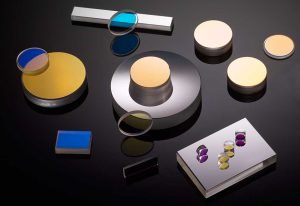laser protective lenses, as the name suggests, are used to prevent dust and slag splashing from damaging the focusing lens. The focusing lens of a laser cutting machine is a relatively precise optical component, and its cleanliness directly affects the processing performance and quality of the laser cutting machine. If the lens selection is not appropriate, it can cause large laser loss, frequent damage to protective lenses, unstable product quality, and serious losses to the enterprise. Although the protective lenses of laser cutting machines belong to vulnerable parts, in order to improve their utilization rate and reduce production costs, the purpose of reuse can be achieved by regularly cleaning the protective lenses.
The prices of protective lenses on the market vary greatly, ranging from tens to hundreds of yuan, and the quality also varies. Of course, it is not uncommon to substitute inferior lenses. If the lens selection is not appropriate, it can cause large laser loss, frequent damage to protective lenses, unstable product quality, and serious losses to the enterprise. So, choosing the appropriate protective lenses is a very important thing to pay attention to.
Laser cutting machine lens cleaning operation specifications. When laser cutting materials, the working surface will release a large amount of gas and splashes, which will cause damage to the lens. When pollutants fall on the surface of the lens, they will absorb energy from the laser beam, leading to thermal lensing effect. If the lens has not yet formed thermal stress, the operator can disassemble and clean it. During the installation and cleaning process of the lens, any adhesive or even oil droplets on the nail can increase the absorption rate of the lens and reduce its service life. Taking the operation of laser lenses provided by Hanzhong Borisun Optics as an example, the following preventive measures must be taken:
1. Never install lenses with bare fingers. Fingertips or rubber gloves should be worn.
2. Do not use sharp instruments to avoid scratching the surface of the lens.
3. When removing the lens, do not touch the film layer, but hold the edge of the lens.
4. Lenses should be placed in a dry and tidy place for testing and cleaning. A good workbench surface should have several layers of cleaning tissue and several sheets of cleaning lens cotton paper.
5. Users should avoid talking above the lenses and keep food, beverages, and other potential pollutants away from the work environment.
Although the protective lenses of laser cutting machines are vulnerable parts, in order to improve their utilization rate and reduce production costs, they can be cleaned regularly to achieve the purpose of reuse. Below are three cleaning steps summarized by Hanzhong Borisun Optics:
1. The protective lens material is ZnSe (arsenic zinc oxide), which is relatively brittle and afraid of falling; When disassembling, it should be noted that excessive force should not be exerted and there should be no collision with hard objects. There is an anti reflective film on the surface, which is afraid of contamination, moisture, oiliness, and scratching; Therefore, it is required to provide dry and degreased air during work, and do not directly handle the laser cutting machine to protect the lenses, as skin oil can cause sexual damage to the surface of the lenses. On the contrary, you can wear gloves and their sleeves for operation. For smaller lenses, using optical tweezers or vacuum tweezers will be more convenient. No matter what method is used to clamp the laser cutting machine to protect the lens, it can only be clamped along a non optical surface, such as the frosted edge of the mirror plaque.
In general, it is necessary to check the condition of the laser cutting machine’s protective lenses before and after use and cleaning. Due to the relatively small size of most pollutants and surface defects, we often need to use magnifying equipment when inspecting lenses. In addition to magnifying devices, sometimes we also need to use a relatively bright beam of light to illuminate the optical surface, enhancing the specular reflection intensity of surface pollutants and defects, so that pollutants and defects can be more easily detected.
When cleaning the protective lenses of a laser cutting machine, often use clean wiping paper and optical grade solvents to prevent damage by other pollutants. The wiping paper must be moistened with a suitable solvent and must not be used dry. In consideration of softness, the available wiping paper is pure cotton Webril wiping paper or cotton ball, lens paper, and cotton swab applicators.
Hanzhong Borisun Optics Co., Ltd. has always focused on the field of optical component processing, and is an optical component manufacturing enterprise that integrates research and development, production, and sales. The self built industrial park covers an area of 18 acres and the factory covers an area of 2000 square meters. After forty years of development and precipitation, we have three major business areas: optical cold processing, coating, and polishing powder. We have a production line and testing capability for a complete set of processes for spherical lenses, prisms, and flat mirrors. We have more than ten technical personnel and have obtained utility model patents, which have won unanimous recognition and respect from the industry and customers.




